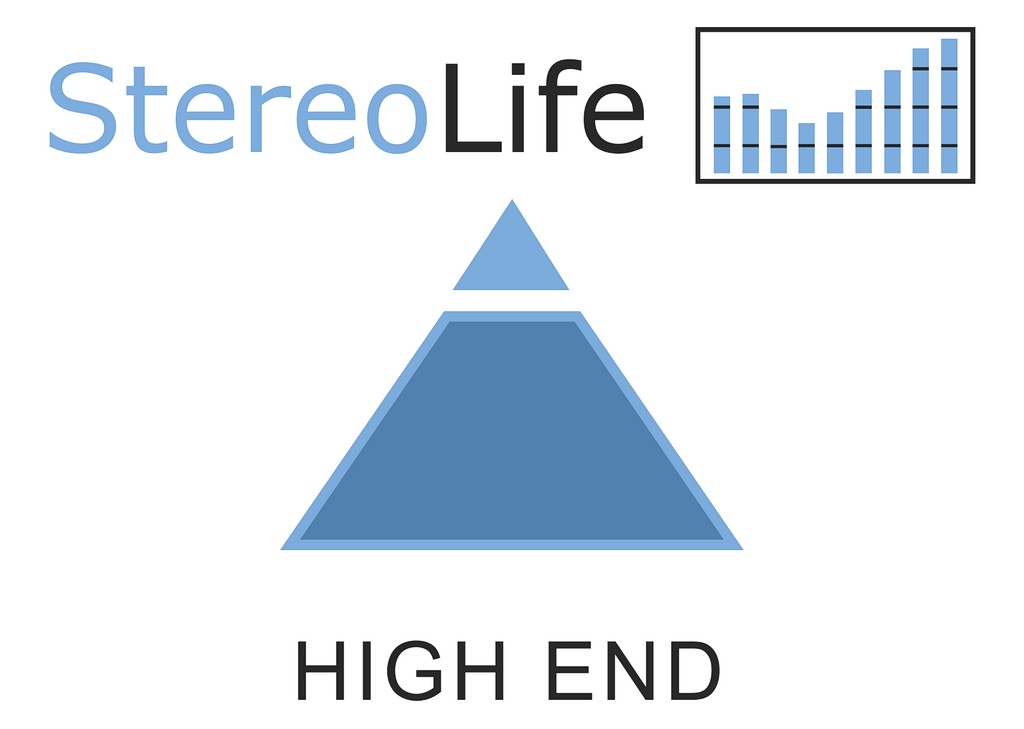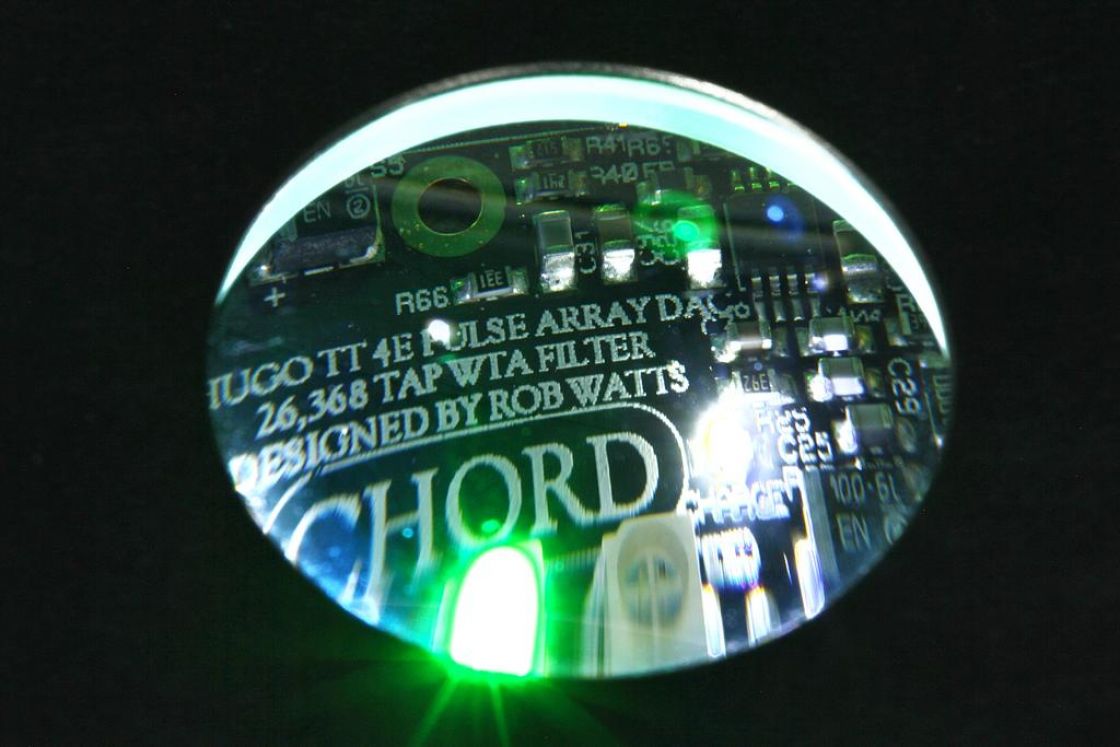
- Reviews
- Posted
Chord Hugo & Hugo TT
Mission, B&W, KEF, Castle, Celestion, Rogers, NAD, Acoustic Energy, Naim, Spendor, Harbeth or ProAc are only a few companies whose names all audiophiles should associate with what might be called the British school of sound. Absolutely, this does not mean that the products of all these brands sound the same. You can distinguish here, at least, a couple of trends, but there is no denying that in this part of the world a lot of audiophile legends were created. Recently, another British company reminded us about itself. So far Chord Electronics were mainly engaged in hi-end gear for home use, but thanks to a small, functional headphone DAC everyone heard about it. This DAC was of course the Hugo. Hugo TT is its bigger brother - a typical desktop model, with an expanded functionality. Since we didn't have a chance to review any of them, we took both and decided to compare them.
Chord Electronics company was founded in 1989 by John Franks. In the audiophile community, it was known mainly for its incredibly modern amplifiers and CD players, as well as compact units. Today the company is one of the leaders in its field, manufacturing audio electronics aimed at both audiophiles and professionals. The latter have a lot of respect for Chord's amplifiers and DACs. British devices are used, among others, in BBC and Sony studios, as well as in the famous Abbey Road. Hugo was actually the first mobile device offered by the company from Maidstone. When its release was announced, John Franks did not mince his words stating it's the most advanced mobile DAC and headphone amplifier in the world.
We could believe it looking at its price, but the size of the new DAC was shocking. How could such as small box be the most powerful converter in the world? The secret lies in Hugo's interior. No popular chip was used here, but a converter developed from scratch by British engineers, having a pretty amazing parameters. For those who think that the functionality of a small DAC is not enough, the Hugo TT (Table Top) was created. It's basically an extension of Hugo. Some useful features were added, such as four digital inputs, two pairs of analog outputs and three headphone outputs, and also a digital volume control on the outputs, allowing the use of Hugo TT as a preamp connected directly to the power amplifier or active speakers.
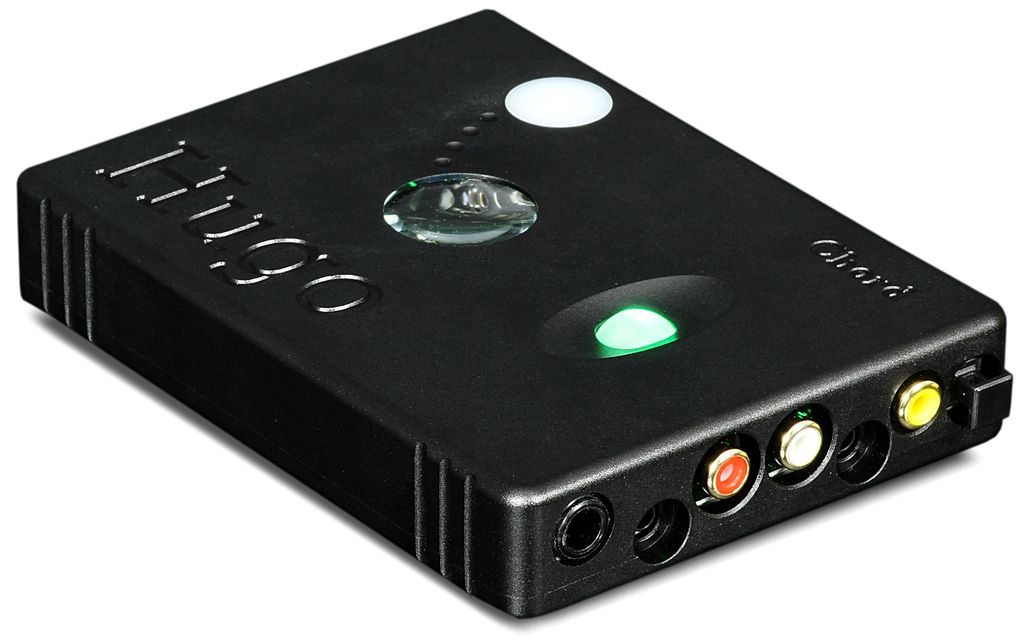
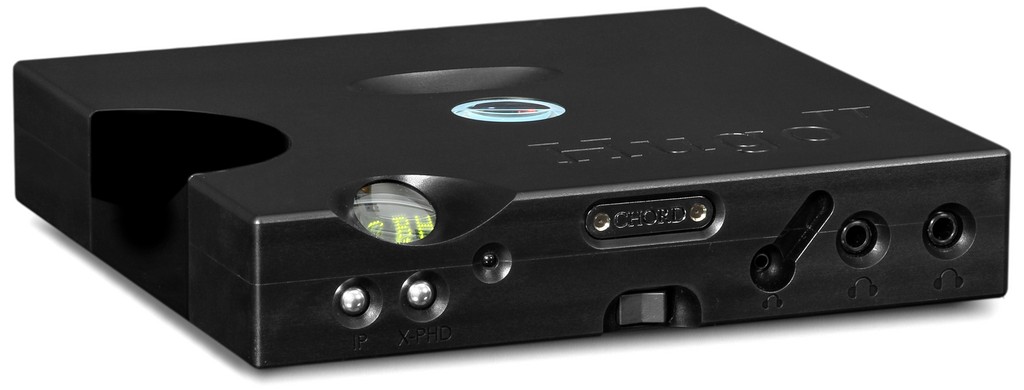
Design and functionality
A futuristic design and excellent workmanship definitely make Chord's mark. Both devices received housing from aircraft-grade aluminium (it is not surprising, considering the education of John Franks, who is an avionics engineer) covered with delicate satin varnish. The finish is quite original. At first glance, the device appears as if it was made of plastic. Only when we touch it, it's pleasantly cool, although still relatively light because of the alloy from which it was made. It's a pity, because, in my opinion, this paint affects the appearance of the equipment - especially how it looks in the pictures. Thanks to this coating, however, we gain increased resistance to abrasions and scratches. Reportedly, it is hard to harm any Chord's DACs. I have not tried, but I believe a word of it.
In the top cover of the housing of each device, various holes were cut with extreme precision - some serve as buttons or knobs, others are purely decorative. These small windows change color depending on the function - they inform the user of remaining battery power, the activity of specific inputs, using a processor, sample rate and volume level. Turning the potentiometer changes its color - the whole palette of colors that can arise in a particular window. Hugo and Hugo TT definitely belong to the category of devices whose proper use requires the experience or, at least, a thorough read of the manual. The largest window hides five LEDs and the enormous amount of information inside, and - frankly speaking - it knocked me out. For example, the middle light indicates the quality of a file being played and shines in nine colors, depending on the type of supported frequency. As for LEDs positioned on the side walls, one informs about amplification, glowing blue when it is maximized. The second window informs about the use the spatial filters, the highest of which is also visualized in blue. However, the filter can be turned off, and then the light goes out.
All slots are placed on the sides of Hugo. On the panel, near the engraved model name, we have the power outlet, power button, two USB ports and two function buttons - source selector and filter switch. On the other side there are two headphone outputs - 6.3 and 3.5 mm, the analog output as a pair of RCA jacks, another 3.5 mm headphone jack and two digital inputs - optical and coaxial. The DAC draws power from the small power adapter, which was supplied with the package. In the box, we will also find necessary cables. The biggest problem is limited access to the RCA jacks, which were sealed into the housing. As a result, the use of audiophile interconnects with massive plugs is not an option. Chord offers here some kind of adapter to allow us to gently "extend" RCA jacks, but it doesn't seem to be a very elegant solution.
This problem doesn't occur in the Hugo TT. This is a more developed device and the designers didn't have to make any compromises, due to the size of the housing. On the back, we find the power socket, analog outputs in two standards - XLR and RCA, and also four digital inputs - coaxial, optical, and two USB type B. RCA outputs protrude from the housing and are spaced widely enough that you can safely think of even very thick cables. As it is with the coaxial input. Two USB inputs are intended for standard and high-res signals - the same as in Hugo. On the front panel of the Hugo TT there is another new feature - a display in a curved window, positioned at an angle. Green LEDs inform us about the selected input. We can change the settings using three small buttons below the display. I admit that it is quite an interesting solution. The chrome plate with the company logo looks very elegant, but the mains switch placed under it looks a little less cool. On the right side of the front panel, we find three headphone jacks - this time one small (3.5 mm) and two large ones (6.3 mm). We can adjust the volume digitally, using a knob on top of the device. Hugo TT can of course work as a preamp. And there's another bonus, which is not present in the smaller brother - a small, but very elegant, metal remote control.
All this means that Hugo TT should work better in stationary hi-fi systems, where besides the headphone jack, we use mainly the analog output, combined with an integrated amplifier, power amplifier or active speakers, and the DAC is connected to the computer and several digital sources - CD player, console, Blu-ray... Ah, both devices support the aptX Bluetooth protocol. Both are also powered by a battery and support hi-res files. However, while Hugo can be a partner for a laptop computer and good headphones or element connecting your computer with a stereo system, the Hugo TT seems to be a much more serious device designed for high-end systems. Although these three headphone outputs on the front probably weren't mounted there by accident.
Cons? I have already mentioned deeply inserted sockets in the Hugo. The second biggest shortcoming of both devices is, in my opinion, power supplies which actually look like mobile phone chargers. But I guess that's because they are in fact just charging the batteries inside each DAC, so maybe investing in a larger, heavier power supply only to maintain the battery life was not necessary. The biggest advantages? Interesting design, fantastic build quality, excellent functionality and no major problems in use, once you familiarize yourself with the instructions and get used to the position and the operation of all controls. Now it's time for the listening!
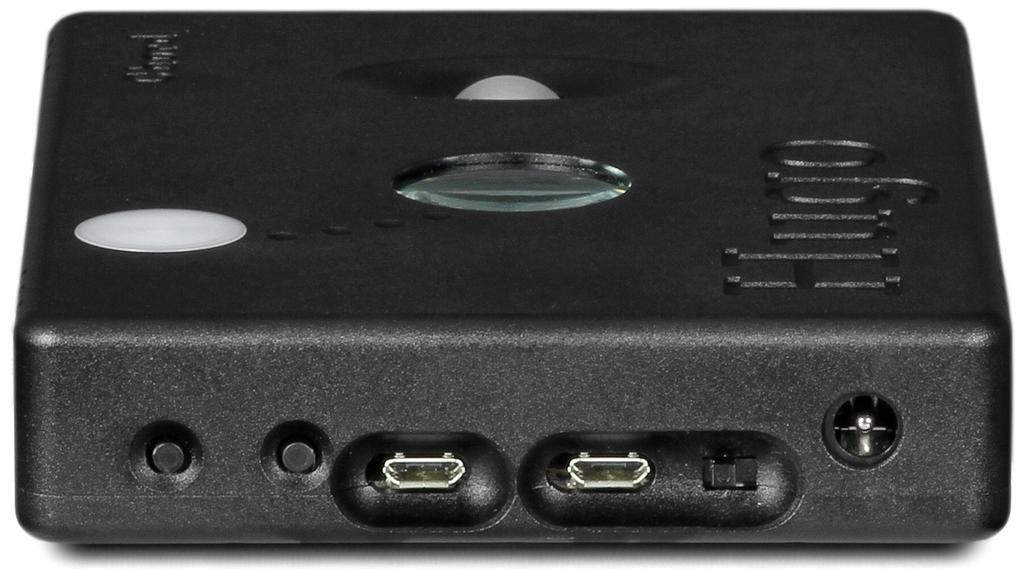
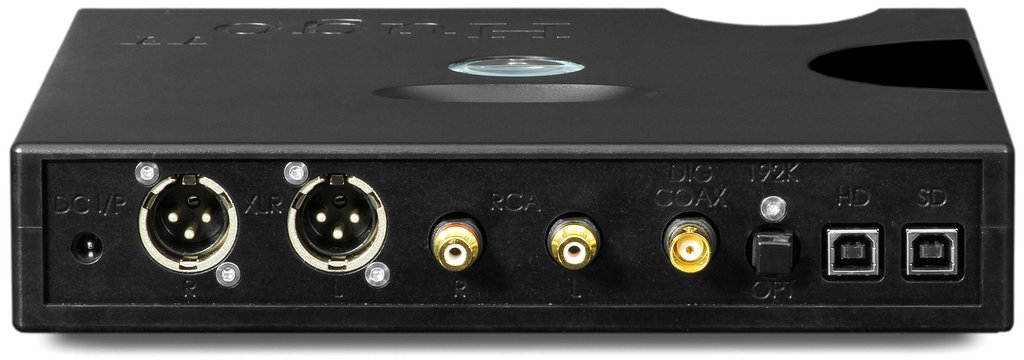
Sound performance
Because I specialize in headphones and mobile equipment, I used headphones for most of the time. I started with my favourite Sennheisers HD 600. As it turned out later, it was one of the best combinations with both devices. Thanks to British DACs, HD 600 gained new life and splendor. I thought that after a few years with these headphones I've heard everything, but life can be surprising. Hugo is very fond of high-impedance headphones, which resulted in a very neutral sound. Technically correct, but also full of artistry. First of all I have to mention a very wide soundstage with an extensive depth and a great positioning of sources. Noble, neutral sound temperature with the right force at the bottom end and lots of details complemented the performance.
Another model of headphones I tried were AKG K701. With Chord's devices, they presented dynamic, exuberant, detailed and saturated sound with a quick, well-controlled bass. For ages I marvel at these headphones, but the combination with Hugo was - I do not hesitate to use that word - perfect for them. Some argue that the performance of K701 is lean, deprived of low bass. If you belong to this group, please listen to them with any of these DACs. This doesn't mean that Hugo or Hugo TT offer a boomy, emphasized bass. They played in a very neutral and well-balanced way and cooperated with AKG headphones in a sensational way.
Time for a representative of planar headphones - the Audeze LCD-2. Unique headphones, which stand out from the dynamic designs. LCD-2 are very focused on pleasure and musicality like no other participants in this review. Their performance is saturated, with rich mids and full-color bass. Neither Hugo nor Hugo TT changed their attitude to music, although this configuration was, at least, satisfactory. In addition to natural, organic sound temperature, the soundstage appeared to be full of air and space - that's the reason why we love planar headphones. Bass softly muttered and sometimes suddenly hit with all available power, but only when recording required it. It happened without the slightest loss of control or unnecessary showiness. Complete relaxation and total pleasure in contact with the music.
At the end, I decided to describe the best combination in my opinion. I am talking about the Sennheisers HD 800 because I think these headphones show the benefits of the two British DACs in the best and full way. Not without reason in the advertising materials Hugo is accompanied by precisely these headphones. If you have the HD 800 and you still feel a lack of something, you have to try Hugo or Hugo TT. Amazing acoustics allows you to forget about the fact that you wear headphones at the moment. We are teetering on the verge of relaxing pleasure and technical listening to every detail. The bass is heavier than in all headphones mentioned before. Nevertheless, it remains free and fast. In addition, we get a slight smoothing of mids. Female vocals were so realistic and intimate as if they were addressed just to me. When it's necessary, the sound is pleasant and soothing, and at other times sharp and analytical. Everything, after all, depends on the recording, and the equipment presents all the details flawlessly. In the highs, there wasn't even a slightest coloration. However, the soundstage was the best element here. The foreground and background are presented at a distance and this positively influences out perception of music, giving a completely non-headphone experience and allowing us to extract individual sounds even when there is a lot of them.
In my home system, three fundamental aspects of presentation drew my attention - bass, dynamics and transparency. Each person listening to my hi-fi system mentioned at least one of these features, or all at once. Despite a large amount of bass, there was no exaggeration, at least, I can't say that something bothered me here because the quality went hand in hand with quantity. The bass was always perfectly controlled and fast. The dynamics naturally combined with transparency, giving sound rich in detail and complex, even at the level of micro details. The wide soundstage was created by the subsequent layers. Thanks to the outstanding holography and tangibility of instruments, Hugo TT allows us to directly associate with the music, even to touch it. The resolution of this British DAC is, even at this price range, extraordinary.
At the end, I have to say a few words about playing via Bluetooth. I admit I was skeptical about this feature. Here, however, it worked perfectly, and the difference between a regular wire connection and wireless transmission was not so dramatic. Of course, the configuration with cable is better, but if we return home after a busy day, we can play the music from our phone without the search for a cable and peeking around hi-fi equipment... We can all be audiophiles, but sometimes the possibility of laying on the couch and playing of music within three seconds is simply priceless.
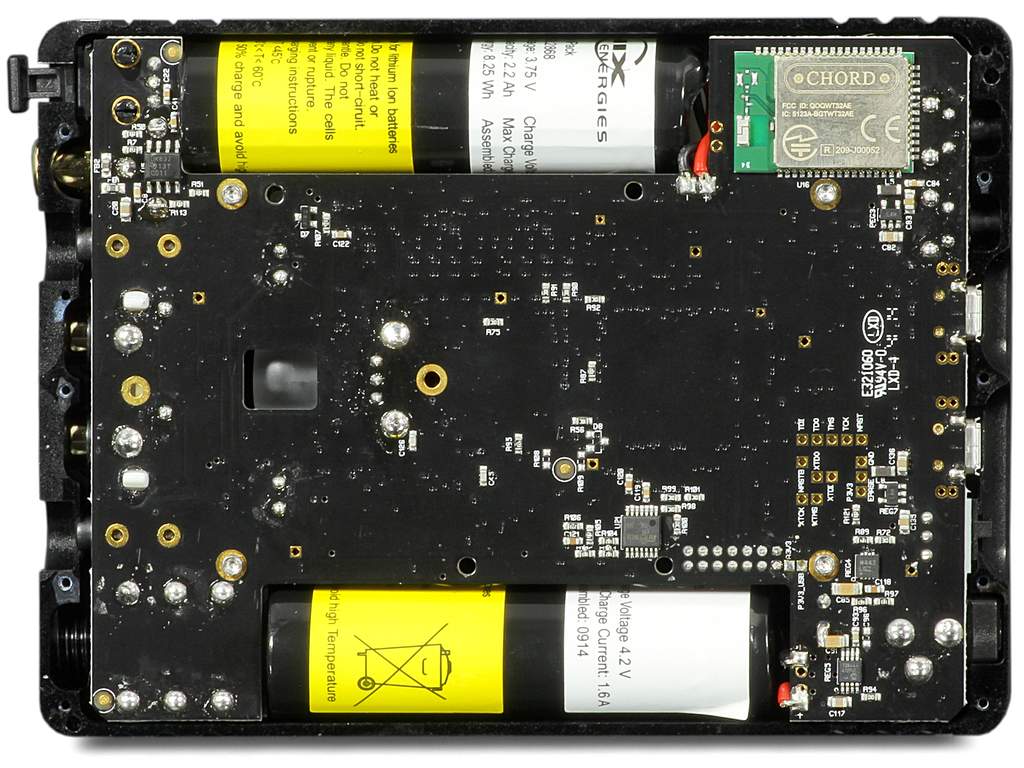
Build quality and technical parameters
Chord Hugo and Hugo TT are digital-to-analog converters, equipped with headphone outputs and lots of other features. The main difference between these two models is the size of the enclosure and available sockets. While Hugo fits every hi-fi system from mid-range to hi-end, even as a bridge between a laptop and headphones, Hugo TT is a desktop device, which can also replace a preamplifier in a high-end stereo system. In these models, there is no ready-made AKM or ESS Sabre chip, but inside we find an original converter designed by Robert Watts - a world-renowned specialist working in this field for over three decades. According to the initial design, this converter was supposed to be an entire circuit board with separate components and its own processor. Finally, the DAC was created and it works achieving incredibly good performance.
In fact, we can fully appreciate these devices only after taking them into pieces. This is not very difficult, although you need to use screwdrivers with microscopic tips. After removing all the screws, the enclosure doesn't fall apart into two parts, due to a very precise fitting. The chassis is made of aircraft aluminium which is characterized by low weight and high strength. The elements were probably made using computer-controlled milling machines, as you can see from the inside - the metal blocks are extremely thick, only spaces for circuits were cut in them. Not surprisingly, Chord's DACs survived an encounter with a 13-ton tank - you can watch a movie about it on the web. The only result was was the oblong indentation on the enclosure - the device worked normally. I'm not surprised.
As for the electronic circuits, the heart of both devices is the Pulse Array DAC patented by Chord. To put it simply, this is a DAC based on programmable FPGAs (Field-Programmable Gate Array), separate for the left and right channel. Xilinx Spartan-6 X9 was used here and it ensures the necessary processing power to processes everything with reducing jitter, signal processing in PCM and DSD, as well as digital filtering or volume control. Even the USB receiver made by Atmel uses software developed by Robert Watts. Hugo is powered by the 2200 mAh rechargeable battery, working for 12 hours. Charging takes about two hours - after this time, the DAC can be unplugged. This allows you to also use it with tablets or smartphones. Connected devices, however, don't use each other's batteries. Hugo TT is similar, but DAC's board is only part of the whole circuit. Four batteries are linked with a capacitor bank with a total capacity of 10 F. It is no wonder that with such a power supply, Hugo TT easily deals with planar headphones.
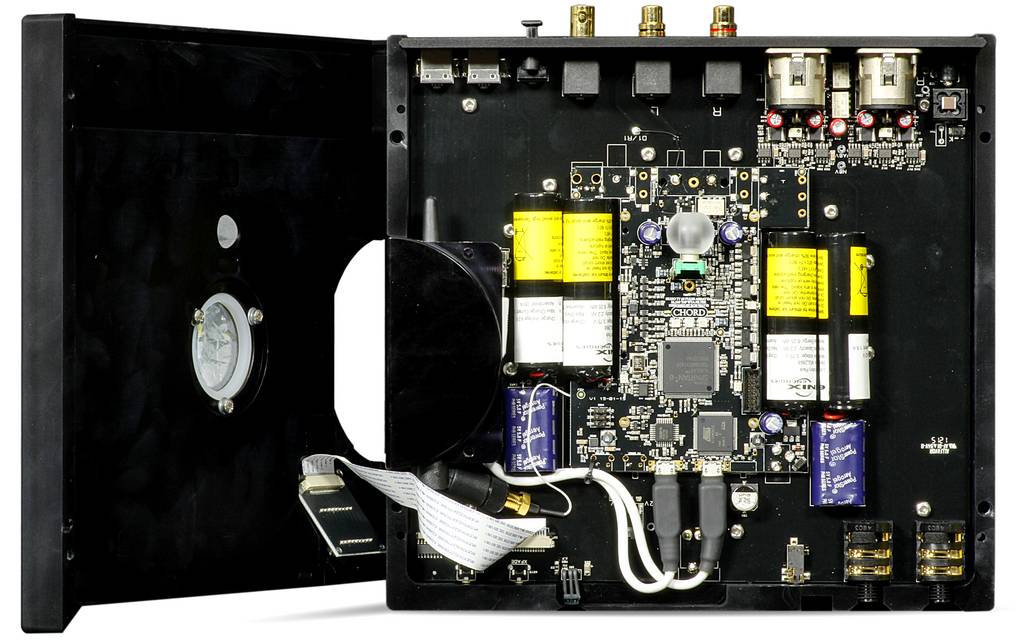
System configuration
During the review, I used a wide range of headphones, including Sennheiser HD 600 and HD 800, AKG K701, and Audeze LCD-2. I don't list all of them because with these are the models I liked most. I also used Astell&Kern AK380 and Questyle QP1R DAPs. In the stationary hi-fi system, Chord's devices worked with Naim Nait 3, Naim CD2, KEF Reference 104/2, two DAPs mentioned above, a laptop, tablet, and smartphone as a source.
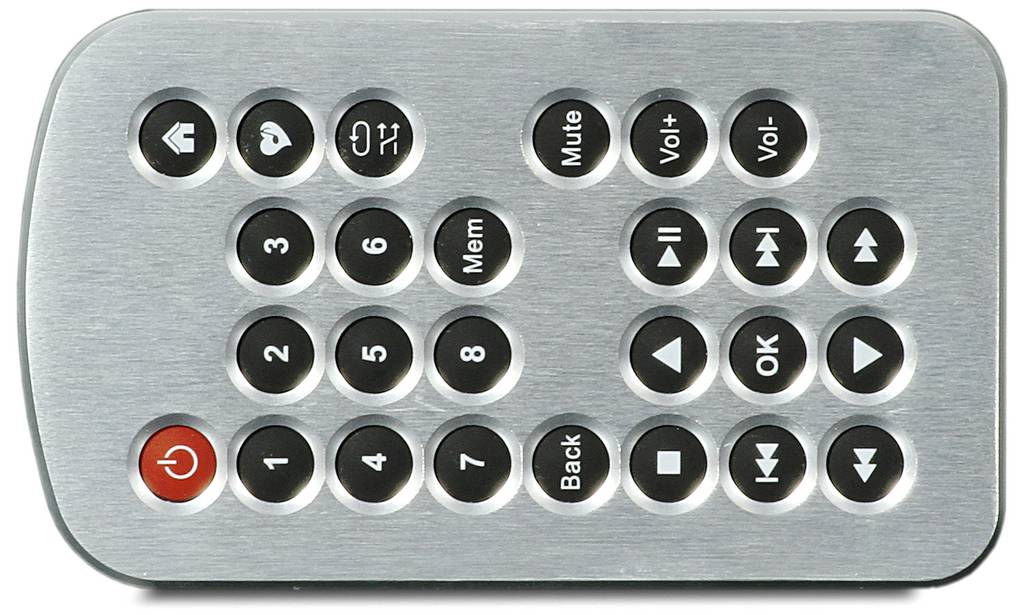
Verdict
On the market there are lots of different DACs aspiring to become the audiophile equipment, but very few of them are unique devices that stand out from the crowd in terms of both design and sound. Chord's products have the whole package - they are able to satisfy even the most demanding user and demonstrate how far digital technology has already gone. Hugo and Hugo TT not only offer fantastic sound but actually show the way of development to other manufacturers who want to create something truly outstanding. For me, it's definitely world class sound.
The matter of choosing between the two devices is unresolved. For some, the functionality will be crucial here. They will be willing to pay extra for the more expensive Hugo TT due to the XLR and RCA sockets, a preamp option, a remote control, and a bit better sound, especially on the analog outputs and with demanding headphones. Others after a cold calculation will conclude that Hugo gives almost as good sound as the larger model for half the price. The choice will, therefore, depend only on purely practical needs and our budget. I know only one thing - if you are looking for a high end DAC, and you respect neutrality, holographic soundstage, and the dynamics, you have to try one of these devices. I am charmed by the sound and functionality of both of them.
Technical data
Digital inputs: optical, coaxial, 2 x USB, BNC (Hugo TT)
Analog outputs: RCA (Hugo), RCA + XLR (Hugo TT)
Headphone outputs: 2 x 3,5 mm, 1 x 6,3 mm (Hugo), 3,5 mm, 2 x 6,3 mm (Hugo TT)
Dynamic range: 120 dB (Hugo), 140 dB (Hugo TT)
Dimensions (H/W/D): 2/13,2/10 cm (Hugo), 4,5/23,5/22,5 cm (Hugo TT)
Price: £1399 (Hugo), £2995 (Hugo TT)
Manufacturer: Chord Electronics
Sound performance
Editor's rating
8.6Overall10Sound8Functionality9Design9Quality7Price
